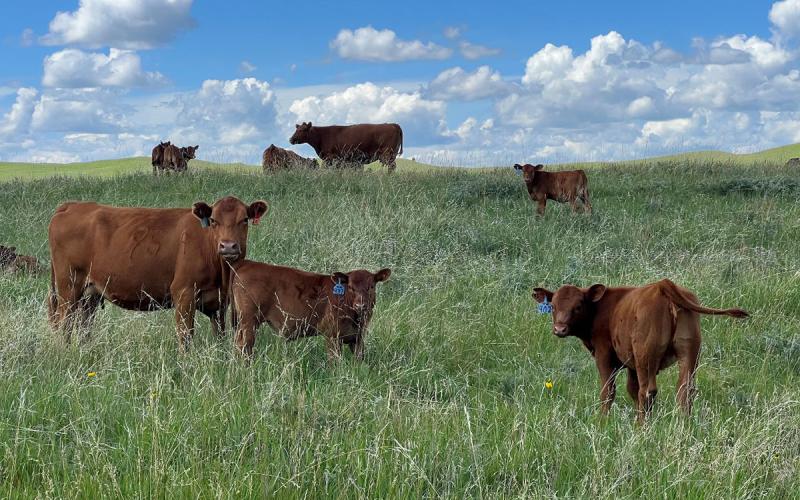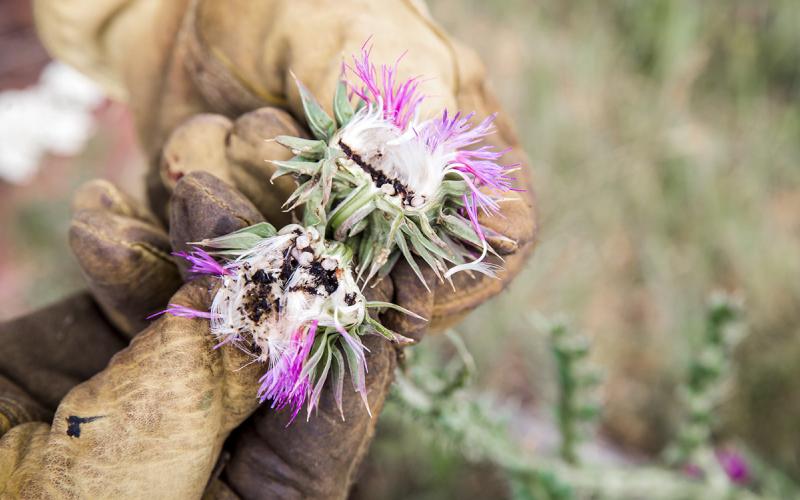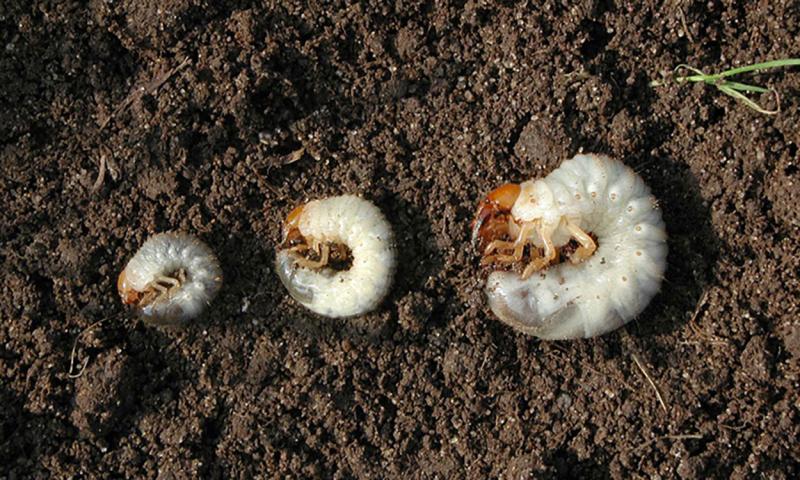
Written collaboratively by Adam Varenhorst, Brad McManus, Philip Rozeboom, and Patrick Wagner.
Originally Submitted: May 9, 2024
There have been an increasing number of reports of pastures with dead areas showing up this spring. A little digging into these areas has revealed that part of the problem is the presence of true white grubs, which are the larva of June beetles (Figure 1).
True white grubs feed on grass roots, leaving behind large, circular patches of dead grass and bare ground as shown in Figure 2. Their presence is often exacerbated in areas where grass has experienced drought stress and overgrazing.
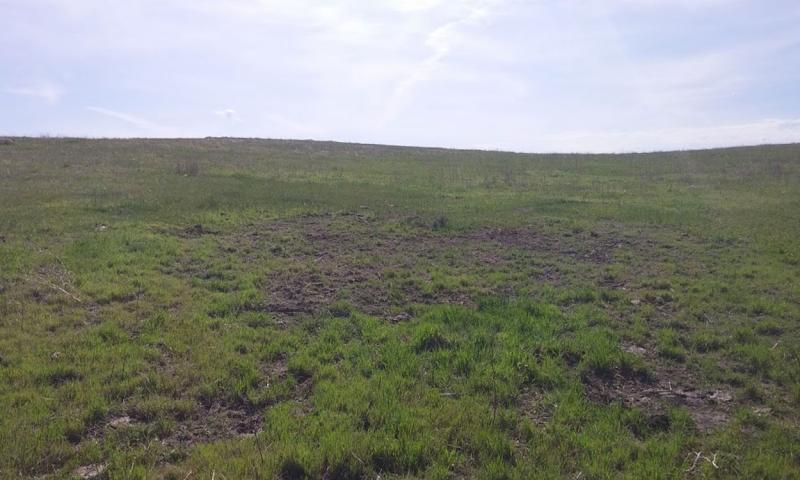
True white grubs have a three-year life cycle, during which they grow underground and eventually emerge as beetles. Based on recent reports, it is estimated that 2024 is the third year of the true white grubs that are causing issues in southern South Dakota. This means the true white grubs will feed during 2024, and adult emergence will occur next spring (2025). The main concern for 2024 is the potential for severe damage to occur in pasture and rangeland due to the large size of the third instar grubs and their increased capacity to damage grass roots.
Profile
June beetle adults can be one-half to 1 inch long and are light to dark red-brown in color (Figure 3). They typically emerge in May and June and are frequently seen near lights at night. The June beetle larvae, or true white grubs, are white to cream in color and almost always C-shaped when observed. True white grubs can be distinguished from other grubs by the “zipper” pattern of hairs, or raster, at the end of their bodies (Figure 4).
Adult June Beetle
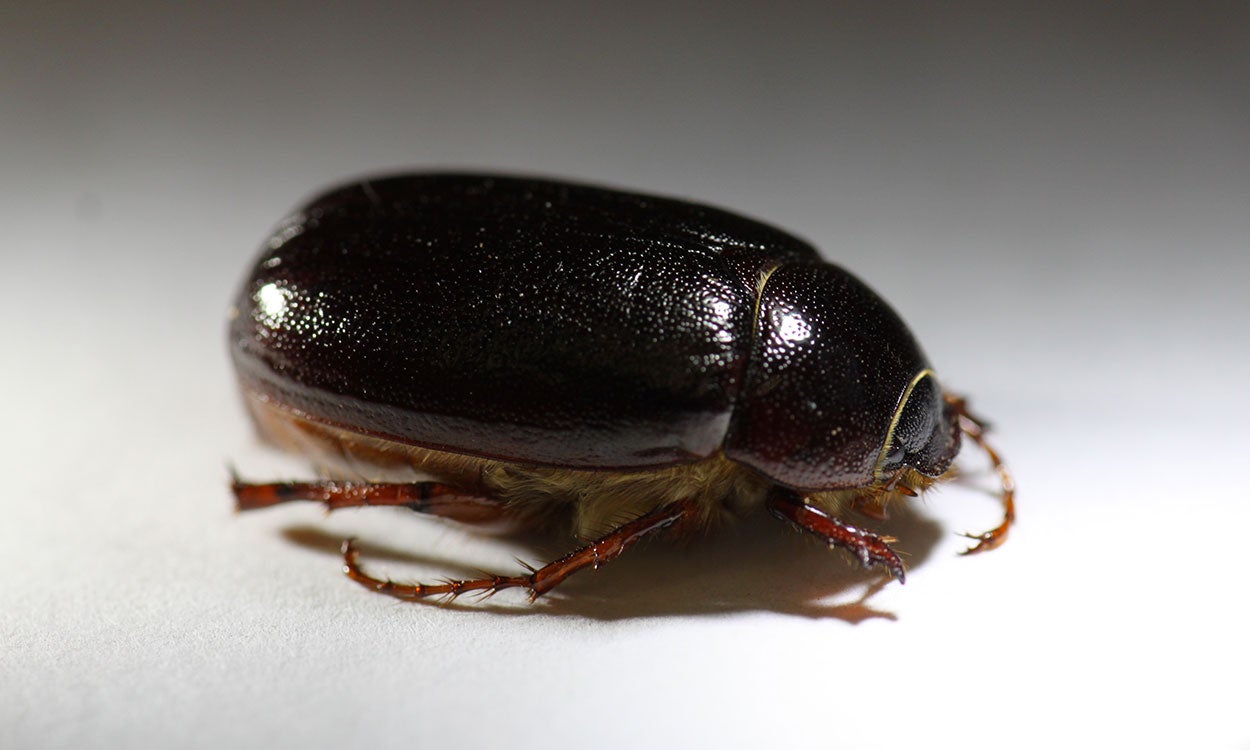
Zipper Hair Pattern
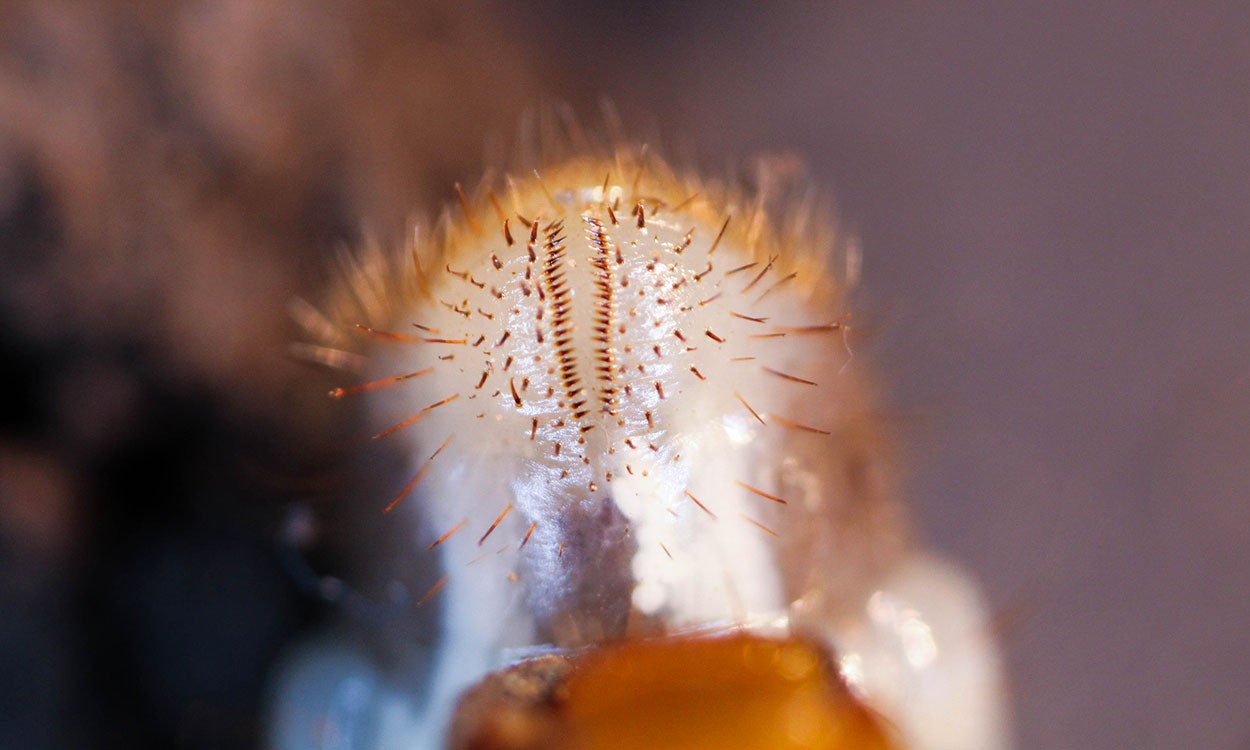
Lifecycle
In the year that adult June beetles emerge, eggs are laid, and the true white grubs hatch and begin feeding. During this time, the grubs are fairly small, and feeding injury to the roots is not readily apparent. After the growing season ends, grubs overwinter in the soil. During the second year, the grubs are larger in size, and the associated feeding injury is more obvious. As mentioned, this feeding will be easier to notice in areas with drought stress. The patches of stressed grass will initially appear as a small area of yellowing or brown grass, but during the season the area will spread outwards. The grubs will then overwinter for an additional year. During the third year, the true white grubs are much larger, and feeding injury to grass will be readily apparent. The growth of the patches is likely dependent on drought stress, as well as the grub density. In July, the grubs pupate, and adults will be present in the soil, where they will overwinter. During the following spring, adults will emerge and start the cycle all over again. It is important to note that not all June beetles are on the same cycle, so adult emergences can vary.
Management
Areas that had signs of a white grub infestation last year will have more feeding injury during 2024. Many of the areas where true white grub activity is being noticed had drought conditions during 2023.
There are no insecticides labeled for white grub management in pastures and rangeland. Doing so is considered an illegal activity and will cause more harm than good to the insect community that is present and will have little to no impact on the true white grubs in the soil. Currently, the recommendation for dealing with grub injury is to maintain a healthy grassland system and to avoid stressing grass, especially during drought conditions. Reseeding may be an option in circumstances where significant damage has already occurred. When reseeding, be sure to choose plants that are less attractive to June beetles, such as native grasses and forbs. Non-native, cool-season grasses can promote true white grub infestations and should not be used.
